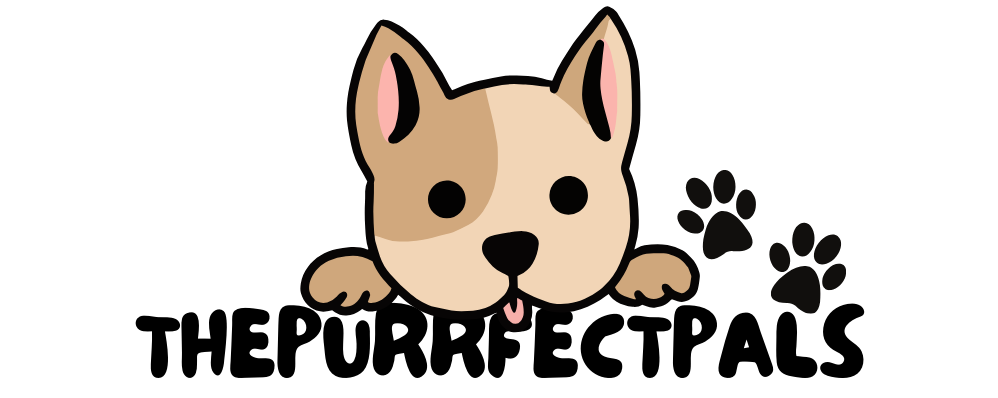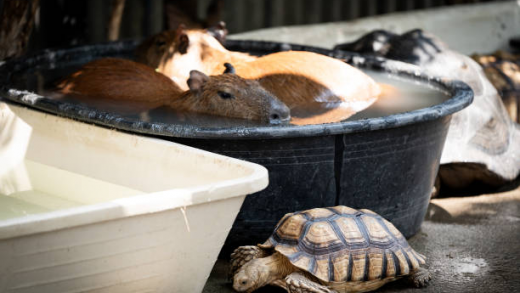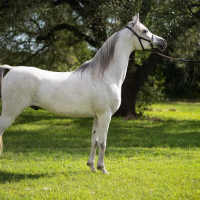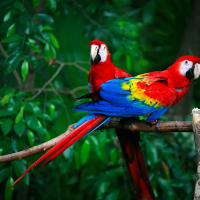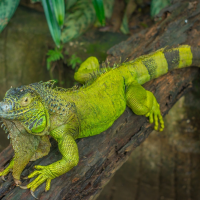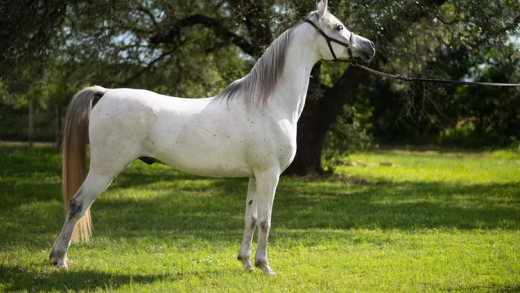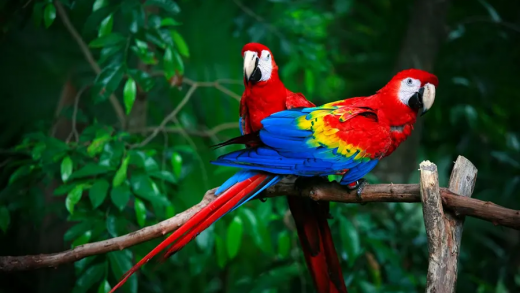The dik-dik is the name for any of four species of small antelope in the genus Madoqua that live in the bushlands of eastern and southern Africa. Dik-diks stand about 30–40 centimeters (12–15.5 inches) at the shoulder, are 50–70 cm (19.5–27.5 inches) long, weigh 3–6 kilograms (6.6–13.2 pounds) and can live for up to 10 years. They are named for the alarm calls of the females. Both male and female dik-diks make a shrill, whistling sound, which may alert other animals to predators.
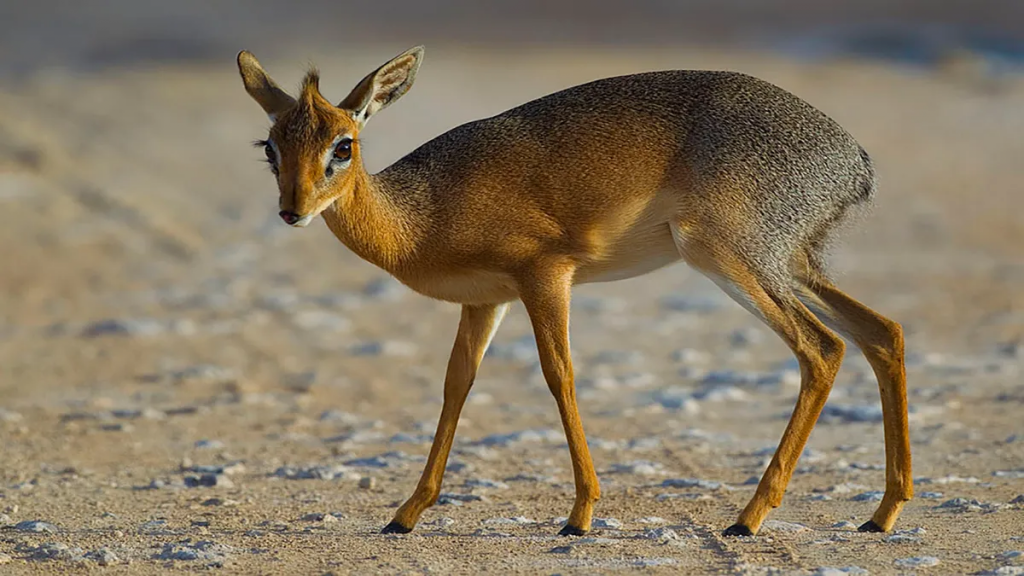
Table of Contents
Quick Facts
- Scientific Name: Madoqua
- Lifespan: 10-12 years in the wild, up to 18 years in captivity
- Habitat: Bushlands, savannas, and dense thickets in eastern and southern Africa
- Diet: Leaves, shoots, fruits, and berries
- Size: 12-16 inches in height at the shoulder; 6-12 pounds in weight
- Activity Level: High; crepuscular (active during dawn and dusk)
- Social Structure: Monogamous pairs
History & Origin of Dik-Dik
Dik-diks are tiny antelopes of the Madoqua genus that live in eastern and southern Africa’s bushlands and savannas. The term “dik-dik” comes from the sound they make when scared. These little antelopes have developed over millions of years to adapt to their arid and semi-arid environments, adopting specific habits and physiological features to thrive under severe conditions. Dik-diks have long been a part of African mythology and culture, frequently representing agility and elusiveness. Despite their tiny size they serve an important role in their ecosystems serving as food for a variety of predators and promoting plant diversity through selective feeding.

Physical characteristics
Dik-diks are among the tiniest antelopes reaching about 12 to 16 inches tall at the shoulder and weighing 6 to 12 pounds. They are readily distinguished by their huge black eyes which are ringed by noticeable white rings and their extended snouts which aid in heat dissipation. Their fur is silky and comes in a variety of brown colors allowing them to blend in with their surroundings. Dik-diks’ thin legs and compact physique allow them to travel quickly through dense undergrowth. Males are slightly smaller than females and have short backward-curving horns that reach around 3 inches in length. Both sexes have preorbital glands behind their eyes which they utilize to scent mark their territory.
Temperament and Personality
Dik-diks are recognized for their shyness and elusiveness. They are extremely territorial and live in monogamous pairs defending areas ferociously against invaders. These antelopes are crepuscular meaning they are most active in the early morning and late afternoon. Their strong senses of sight hearing and smell aid them in detecting predators and they rely on their speed and agility to avoid danger. In captivity dik-diks can develop acclimated to human presence while maintaining their cautious and timid disposition. They communicate via a range of vocalizations including whistles, grunts and the distinctive “dik-dik” warning call.

Exercise and Activity Needs
Dik-diks are naturally energetic creatures that need plenty of area to wander and forage. In the wild, they cover a large area within their territory always on the move to hunt food and evade predators. Captive dik-diks should be housed in a large and well-equipped cage that resembles their natural environment complete with lush foliage, hiding spaces and various topography. Providing opportunities for physical activity is critical to their health and well-being. They like exploring and searching for food so providing a diverse range of explore and enrichment items can help keep them cognitively and physically occupied.
Grooming & Care
Dik-diks are generally low-maintenance in terms of grooming. Their short fur takes little care, and they are good at keeping themselves clean. Regular health checkups are required to maintain their status and guarantee they are free of parasites and infections. A well-balanced diet rich in leaves shoots, fruits and berries is essential for their well health. Providing a consistent supply of fresh water is also critical particularly in confined environments. Enrichment items like branches logs and foraging toys can keep them interested and encourage natural activities.

Health and Common Concerns
Dik-diks are usually resilient creatures although they can be prone to some health difficulties especially in captivity. They may develop dental issues if their food does not include enough roughage to wear down their teeth. Respiratory infections are also a problem particularly in poorly ventilated or unclean workplaces. Regular veterinarian check-ups are necessary to maintain their health and handle any abnormalities that arise. Stress may be a major issue for dik-diks frequently caused by insufficient room a bad food or a lack of enrichment. It is critical to provide them with a safe and nurturing atmosphere in order to avoid stress-related health issues.
Training and socialization
Teaching dik-diks needs time and delicate treatment. They may be educated to accept basic husbandry routines and get acclimated to human presence by using positive reinforcement tactics such as snacks and calm, consistent interactions. Early socializing is essential for making them feel safe and reducing their inherent skittishness. Providing a secure and predictable habitat as well as progressive exposure to various stimuli might help them adjust more easily to captive life. Building trust with dik-diks entails respecting their space and enabling them to connect at their own speed.

Conclusion
Dik-diks are intriguing and fragile creatures that have evolved to thrive in Africa’s bushlands and savannas. Despite their tiny size they are very agile and resilient making important contributions to their ecosystems. While they can be difficult to care for in captivity owing to their unique demands and quiet demeanor understanding their physical mental and social needs is critical to preserving their health. With the right care and attention these small antelopes may grow and continue to enchant people who have the chance to see them up close.
People also search about: Common Health Issues in Exotic Pets and How to Prevent Them 2024(Mammals)
